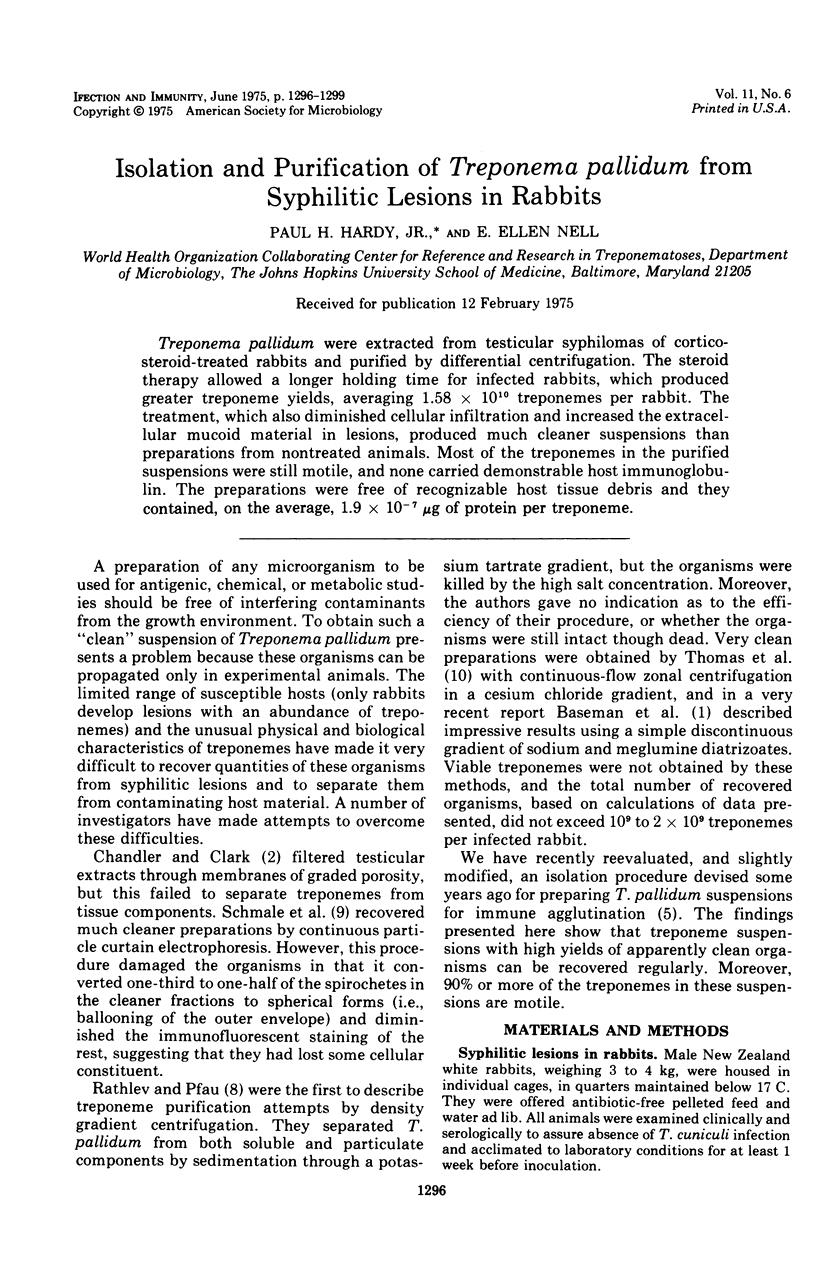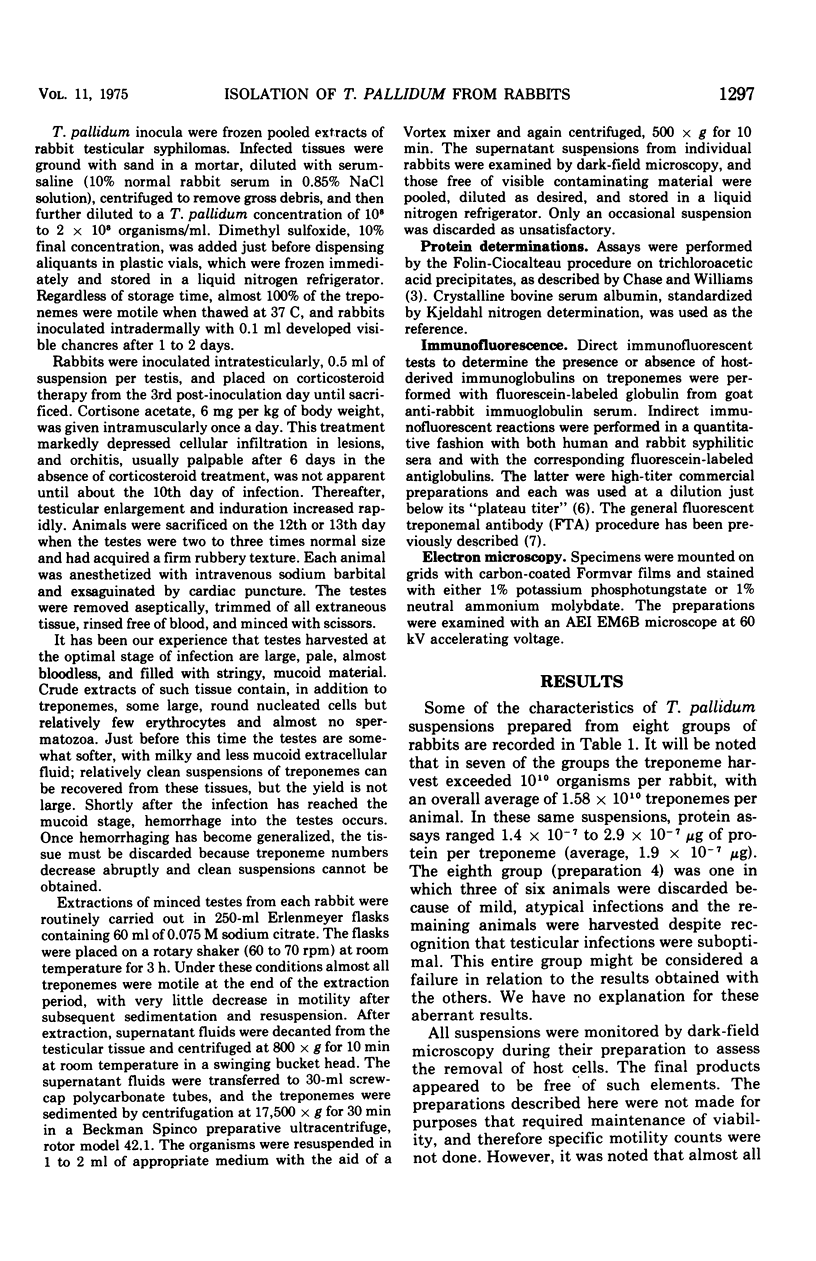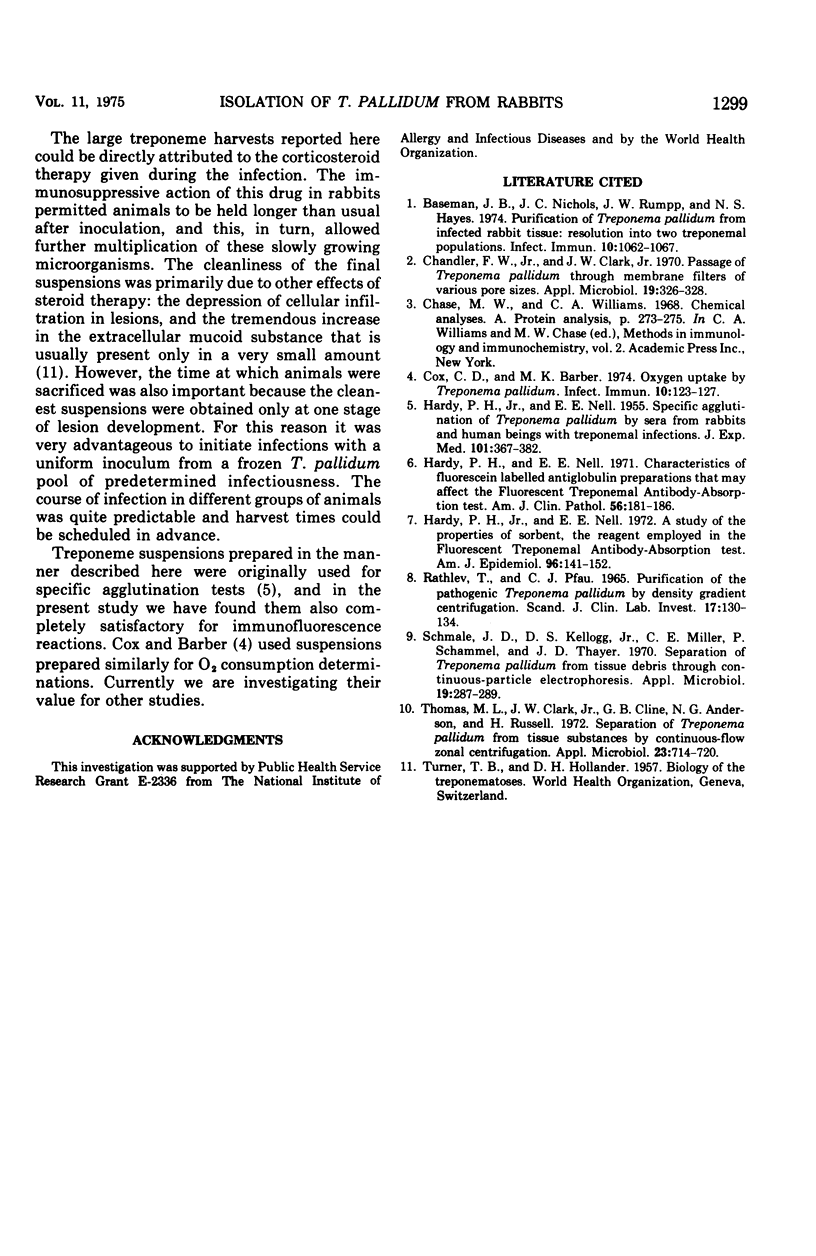Abstract
Treponema pallidum were extracted from testicular syphilomas of corticosteroid-treated rabbits and purified by differential centrifugation. The steroid therapy allowed a longer holding time for infected rabbits, which produced greater treponeme yields, averaging 1.58 × 1010 treponemes per rabbit. The treatment, which also diminished cellular infiltration and increased the extracellular mucoid material in lesions, produced much cleaner suspensions than preparations from nontreated animals. Most of the treponemes in the purified suspensions were still motile, and none carried demonstrable host immunoglobulin. The preparations were free of recognizable host tissue debris and they contained, on the average, 1.9 × 10−7 μg of protein per treponeme.
Full text
PDF



Selected References
These references are in PubMed. This may not be the complete list of references from this article.
- Baseman J. B., Nichols J. C., Rumpp J. W., Hayes N. S. Purification of Treponema pallidum from Infected Rabbit Tissue: Resolution into Two Treponemal Populations. Infect Immun. 1974 Nov;10(5):1062–1067. doi: 10.1128/iai.10.5.1062-1067.1974. [DOI] [PMC free article] [PubMed] [Google Scholar]
- Chandler F. W., Jr, Clark J. W., Jr Passage of Treponema pallidium through membrane filters of various pore sizes. Appl Microbiol. 1970 Feb;19(2):326–328. doi: 10.1128/am.19.2.326-328.1970. [DOI] [PMC free article] [PubMed] [Google Scholar]
- Cox C. D., Barber M. K. Oxygen uptake by Treponema pallidum. Infect Immun. 1974 Jul;10(1):123–127. doi: 10.1128/iai.10.1.123-127.1974. [DOI] [PMC free article] [PubMed] [Google Scholar]
- HARDY P. H., Jr, NELL E. E. Specific agglutination of Treponema pallidum by sera from rabbits and human beings with treponemal infections. J Exp Med. 1955 Apr 1;101(4):367–382. doi: 10.1084/jem.101.4.367. [DOI] [PMC free article] [PubMed] [Google Scholar]
- Hardy P. H., Jr, Nell E. E. A study of the properties of sorbent, the reagent employed in the fluorescent treponemal antibody-absorption test. Am J Epidemiol. 1972 Aug;96(2):141–152. doi: 10.1093/oxfordjournals.aje.a121440. [DOI] [PubMed] [Google Scholar]
- Hardy P. H., Nell E. E. Characteristics of fluorescein labelled antiglobulin preparations that may affect the fluorescent treponemal antibody-absorption test. Am J Clin Pathol. 1971 Aug;56(2):181–186. doi: 10.1093/ajcp/56.2.181. [DOI] [PubMed] [Google Scholar]
- RATHLEV T., PFAU C. J. PURIFICATION OF THE PATHOGENIC TREPONEMA PALLIDUM BY DENSITY GRADIENT CENTRIFUGATION. Scand J Clin Lab Invest. 1965;17:130–134. doi: 10.1080/00365516509077298. [DOI] [PubMed] [Google Scholar]
- Schmale J. D., Kellogg D. S., Jr, Miller C., Schammel P., Thayer J. D. Separation of Treponema pallidum from tissue debris through continuous-particle electrophoresis. Appl Microbiol. 1970 Feb;19(2):287–289. doi: 10.1128/am.19.2.287-289.1970. [DOI] [PMC free article] [PubMed] [Google Scholar]
- Thomas M. L., Clark J. W., Jr, Cline G. B., Anderson N. G., Russell H. Separation of Treponema pallidum from tissue substances by continuous-flow zonal centrifugation. Appl Microbiol. 1972 Apr;23(4):714–720. doi: 10.1128/am.23.4.714-720.1972. [DOI] [PMC free article] [PubMed] [Google Scholar]


